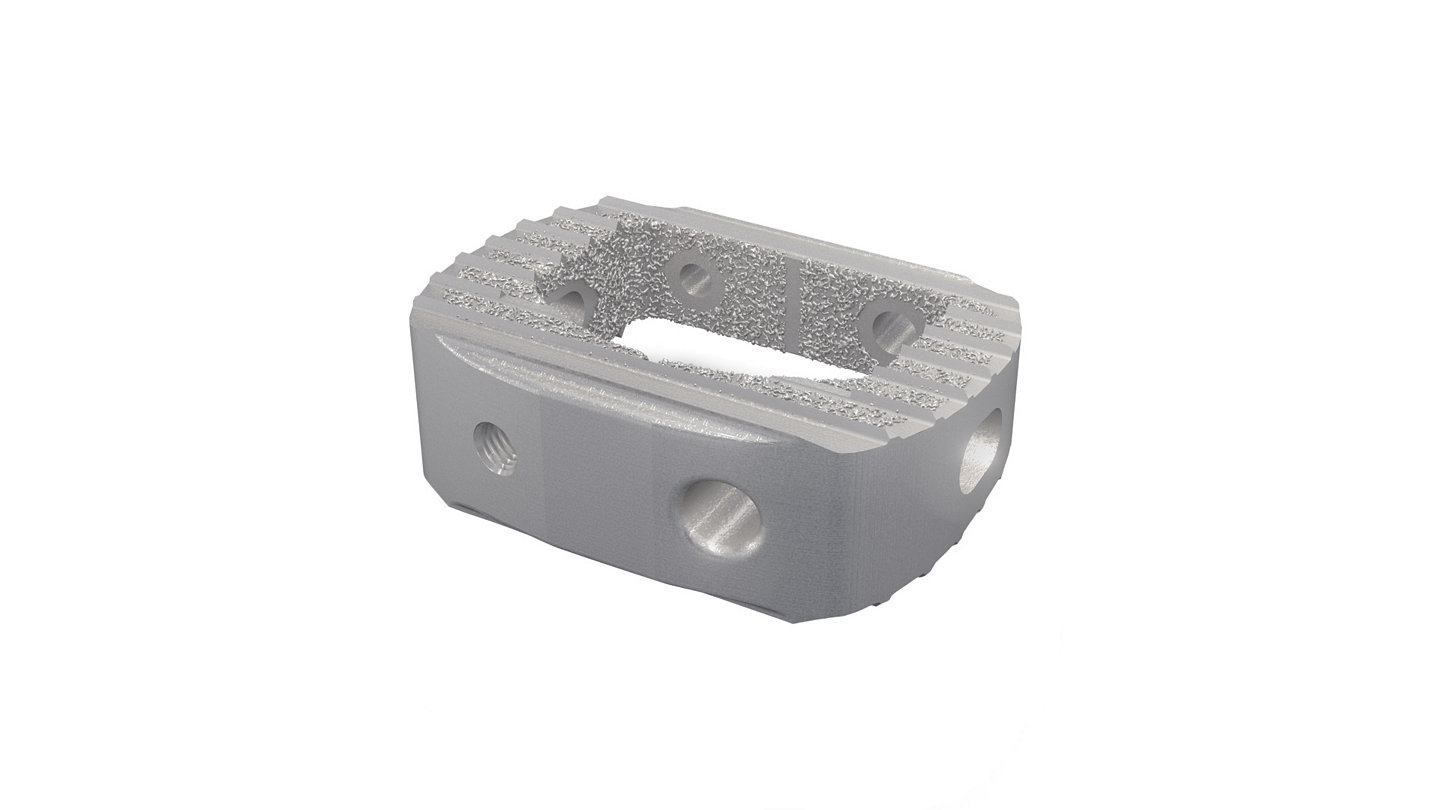Stryker’s Spine Division to Launch Tritanium® C Anterior Cervical Cage at NASS 2017
23-Oct-2017

Latest Addition to Tritanium Product Line Brings Benefits of 3D-Printed Implants that Mimic Porosity of Bone to Cervical Fusion Procedures
October 23, 2017 03:35 PM Eastern Daylight Time
ALLENDALE, New Jersey, USA--Stryker’s Spine division will introduce its Tritanium® C Anterior Cervical Cage, a 3D-printed interbody fusion cage intended for use in the cervical spine, at the North American Spine Society (NASS) Annual Meeting, Oct. 25-28, 2017, in Orlando, Fla. (booth No. 500).
The Tritanium C Anterior Cervical cage is the newest addition to Stryker’s expanding line of spinal implants constructed from its proprietary Tritanium Technology,1 a novel, highly porous titanium material designed for bone in-growth and biological fixation.1 The unique porous structure of Tritanium is created to provide a favorable environment for cell attachment and proliferation, as demonstrated in an in-vitro study,2* and the Tritanium material may be able to wick or retain fluid, in comparison to traditional titanium.3 It is inspired by the microstructure of cancellous bone4 and enabled by AMagine™, Stryker’s proprietary approach to implant creation using additive manufacturing, also known as 3D printing.
“After the terrific feedback and success we’ve seen with the Tritanium PL Posterior Lumbar cage, we are excited to introduce the Tritanium C Anterior Cervical Cage to spine surgeons this year at NASS,” said Bradley Paddock, President of Stryker’s Spine division. “Tritanium Cages feature ‘precisely randomized’4 pore formations, in contrast to other technologies with longitudinal channels and traverse windows that result in a uniform structure, as well as cages that offer porosity only on the surface. As a result, Tritanium implants are designed to become ‘one with bone’.”
“The ultimate goal with spinal implants is to get a solid fusion,” said Dr. Jocelyn Idema, a spine surgeon with Advanced Orthopaedics and Rehabilitation in Pittsburgh and Washington, Pa. “Spinal implants created with Tritanium Technology mimic the porosity of cancellous bone, which aids in fusion.”
Stryker’s Spine division also will present an abstract at NASS, titled, “Evaluation of Bony Fusion with Tritanium PL Used in Mini-Open Approach to Posterior Lumbar Interbody Fusion,” on October 26 at 1:41 p.m. ET, during the Innovative Technology Presentations.
The Tritanium C Anterior Cervical Cage received 510(K) clearance from the U.S. Food and Drug Administration in September 2017. It features an open central graft window and lateral windows to help reduce stiffness of the cage and minimize subsidence. In addition, the large graft window allows for bone graft containment. Engineered for stability,5,6 the cage has precisely angled teeth on the superior and inferior surfaces designed for bidirectional fixation and to maximize surface area for endplate contact with the cage. Its smooth posterior edges are designed to facilitate insertion and protect soft tissue and anatomy. The Tritanium C Anterior Cervical Cage is offered in a number of footprints, heights, and lordotic angles to accommodate a variety of patient anatomies.
Intended Use for U.S.
The Tritanium C Cage is indicated for use in cervical interbody fusion procedures in skeletally mature patients with degenerative disc disease (DDD) at one level or two contiguous levels from the C2 to T1 disc. The cage is to be used with autogenous and/or allogenic bone graft comprised of cancellous and/or corticocancellous bone graft, and is to be implanted via an open, anterior approach. For the full Indications for Use, please refer to the Tritanium C Anterior Cervical Cage Instructions for Use.
About Stryker
Stryker is one of the world’s leading medical technology companies and, together with its customers, is driven to make healthcare better. The company offers innovative products and services in Orthopaedics, Medical and Surgical, and Neurotechnology and Spine that help improve patient and hospital outcomes. More information is available at www.stryker.com and www.stryker.com/builttofuse/. Follow Stryker’s Spine division on Twitter @stryker_spine.
References
1. PROJ43909 Tritanium technology claim support memo
2. RD0000053710: Tritanium cell infiltration and attachment experiment
*No correlation to human clinical outcomes has been demonstrated or established
3. RD0000050927: Tritanium material capillary evaluation
4. Karageorgiou V, Kaplan D. Porosity of 3D biomaterial scaffolds and osteogenesis. Biomaterials, 26, 5475-5491
5. PROJ0000054458 | Tritanium C Insertion and Expulsion Marketing memo
6. PROJ44960: Coefficient of friction memo
A surgeon must always rely on his or her own professional clinical judgment when deciding whether to use a particular product when treating a particular patient. Stryker does not dispense medical advice and recommends that surgeons be trained in the use of any particular product before using it in surgery.
The information presented is intended to demonstrate the breadth of Stryker product offerings. A surgeon must always refer to the package insert, product label and/or instructions for use before using any Stryker product. Products may not be available in all markets because product availability is subject to the regulatory and/or medical practices in individual markets. Please contact your Stryker representative if you have questions about the availability of Stryker products in your area.
Content ID: TRICC-PB-1_15825
Contacts
Sullivan & Associates
Barbara Sullivan,
714/374-6174
bsullivan@sullivanpr.com
